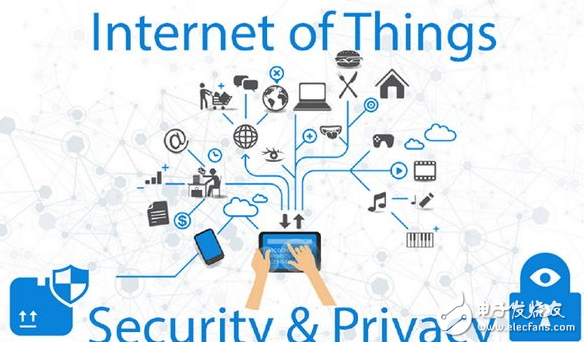Security issues are a problem that technology enthusiasts often overlook when they start building a new product.
Since computers have become one of the indispensable devices in people's homes, the security of computers has become an increasingly prominent problem. Even the elderly will be tired of anti-virus software. But we can also imagine that, in the near future, these attacks will not be single or different. With the increasing number of IoT devices in our homes, the probability of these devices being attacked by hackers will increase. Many people think that smart home owners should pay enough attention to the safety of smart devices (such as smart refrigerators, smart TVs, smart lights, smart thermostats, etc.), and we should protect our IoT devices like computers.
In theory, for people who want to get your data, more devices mean more attacks. Why hackers do this and how to achieve this is relatively complicated, for example, why do they try to use the data of the refrigerator? In addition to causing certain infringements to users, the more terrible thing is that they want to connect to each other via the Internet to make them more accessible to computers or phones that connect these devices. Sensitive and valuable information. Cars, toys and even medical devices connected via the Internet are very vulnerable, and we see more vulnerable products every day.
In the not-too-distant future, we will live in a house where smart devices capture all of our information (such as when we sleep, how we spend that day, how long we leave home every day, etc.) and Information is transferred to our hub devices (such as smartphones or computers). Potential dangers include the fact that hackers may sell this information privately to others, so that others can not only get your information, but even control the devices in your home. If the purpose of the hacker is not just to want your wealth, they may be able to remotely control everything in your home via the Internet, such as a camera, switching lights in your home at midnight, and so on. Another way to attack is to fake a fault in your home device so that you can make a phone call or download a patch to fix these fake faults. These patches may be viruses themselves, you can get your personal information, or even connect to On other devices in the home.
Ransomware is another potential threat. These virus software can infect the computer, making some key data in the computer unusable, and will not return to normal unless a certain ransom is paid. Researchers at Symantec last year found that the virus could spread from one device to another. For example, the virus would first infect your Apple phone, then Apple Watch, and maybe in the future. Infect your car, smart refrigerator or even the entire house.

So how can ordinary people with smart devices reduce the damage caused by these threats? We can minimize this loss by the following five aspects:
Users need to change passwords frequently;
Read the terms and conditions carefully. Although this process is painful, these terms help us understand how our data is collected and the risks that may exist;
Please consider whether you need to do this before connecting the device. Although this sounds inconsistent with the original intention of smart home, you have to know that the more devices you connect, the more likely you are to be hacked;
Pay attention to the software update of the connected device. This is the only way to ensure that software vulnerabilities are fixed. If your device hasn't been updated in a few months, then you have to be careful, because you can't be sure if the new virus is already in the prevention menu of the previous software, and no one guarantees that the device is still safe. ;
Make sure you understand your device. If necessary, please consult your equipment manufacturer how to protect your equipment and the frequency of software updates. If you don't know these, then you have to be careful.
Of course, both equipment manufacturers and equipment suppliers should strive to improve the safety of their products, and as a user, you should take precautions to ensure the safety of your equipment. Nowadays, many devices with new technologies are rushing into the market in order to seize the market as soon as possible. For example, we may have access to some new computer operating systems, but at the same time these systems are actually Imperfect, there are many bugs. According to the normal process, this kind of operating system should be brought to market after the bug is solved, because these unresolved problems are likely to be exploited by hackers to attack smart devices in the home. Equipment manufacturers also need to polish their eyes when choosing a partner. Equipment vendors often need third parties to help collect data. Based on the current cloud service system, companies in the entire industry chain may obtain data on your smart devices, so these companies must be cautious when choosing partners.
In addition, some companies may have such a mindset, that is, "collect data first, then analyze." Although this has become an industry standard when dealing with some very sensitive personal information, it is a big risk. The disclosure of any personal information is not only a matter of information security for consumers, but also a security issue for the entire business chain that provides the service. Because these companies do not guarantee the security of user data, then people's distrust may make these companies disappear.

Of course, we should not worry too much about the threats to IoT devices and smart homes. There is no doubt that the development of technology will lead to new products that will make our lives easier, safer and more comfortable. But we must also be alert to the risks faced by these devices. When consumers are faced with these devices, it is best to ask yourself "Do I really need this device?", "Do I know how this device works?" Prevent risks, starting from the beginning.
Sterilization Card Bags
Guangzhou Ehang Electronic Co., Ltd. , https://www.ehangmobile.com